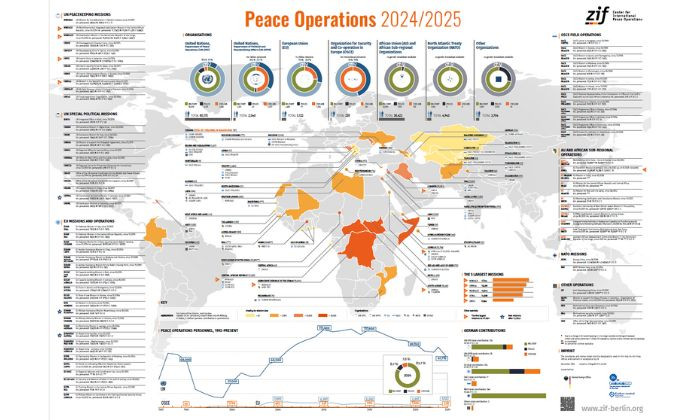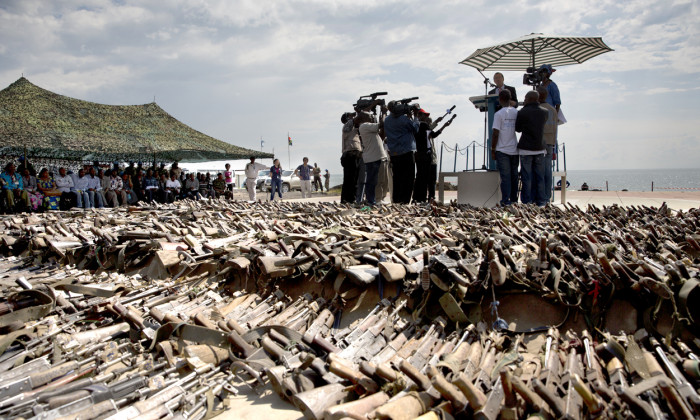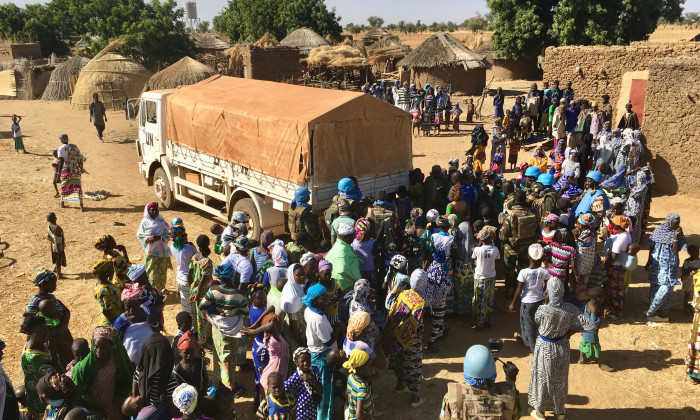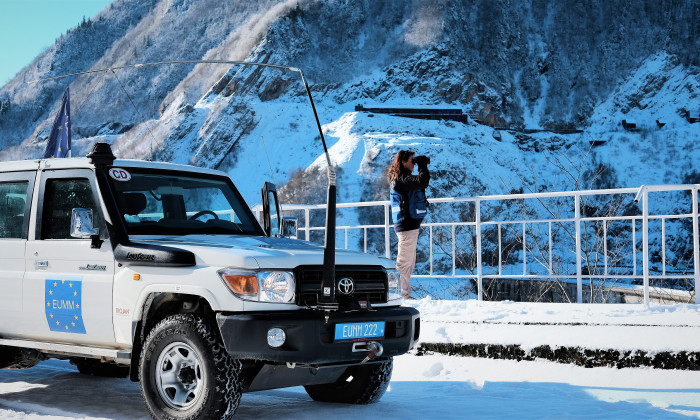What is a Peace Operation?
There is no “typical” peace operation. Operations conducted by the different international organisations vary in terms of scope and tasks: While one may consist of a single office located in the respective country, another could be the size of a small city and have dozens of locations.
Definition of a peace operation
International law and political science have no clear definition of the term "peace operation". There are also differences in practice.
However, there are criteria that peace operations usually fulfill. Accordingly, we understand this to mean
- an institution (mission, field office, special envoy, etc.) that is bilaterally or multilaterally deployed to a country/region,
- usually with the consent of the host country,
- often as a result of a peace agreement or an arrangement on conflict resolution,
- with a mandate to carry out appropriate measures
- to defuse crises, end violent conflicts and secure peace in the long term.
A peacekeeping mission can be deployed before, during and after the "hot phase" of a conflict.
"Peace operations are not a panacea, but they are an indispensable part of the multilateral toolbox of the international community. They have shown over the past years that they are adaptable and changeable - but also need political support and sufficient resources."
 ZIF/Infografik Pro
ZIF/Infografik Pro
While a majority of peace operations are deployed by the UN, a number of other international and regional organisations, including the EU, OSCE or African Union (AU) also make use of this tool. Today, it is not uncommon for multiple missions with different mandates to operate in parallel within the same theatre of operations.
The Development of Peace Operations
Today’s peace operations originate from the early peacekeeping missions of the United Nations. The first of these was deployed in the late 1940s and consisted of unarmed military observers and lightly armed forces (“blue helmets”) tasked with securing ceasefires. This instrument of “peacekeeping” , had not been foreseen nor was it defined in the UN Charter, but emerged out of practical necessity. Since the end of the Cold War, it has undergone substantial change. Today, the aim of peace operations is no longer to “freeze” a conflict, but rather to deal with the underlying causes of the conflict – even if in practice this is not always successful. The resulting shift in focus is reflected in the following:
- a growing circle of actors besides the UN, including the EU, OSCE, NATO, AU and groups of states (so-called “coalitions of the willing”);
- deployment of police officers and civilian staff in addition to military personnel;
- a much wider (“multidimensional”) spectrum of tasks;
- the demand for greater specialisation of personnel;
- authorisation to use military means to protect civilians and defend the mandate (so-called “robust” operations).
 ©UN MONUSCO/Sylvain Liechti_DRC
©UN MONUSCO/Sylvain Liechti_DRC
Generations of Peace Operations
1. Generation: Traditional operations (from 1948)
- Static monitoring of peace and ceasefire agreements
- Safeguarding a buffer zone between parties to a conflict
2nd generation: Multidimensional operations (from late 1980s)
- Establish temporary security presence
- Simultaneously tackle causes of the conflict
3rd generation: Robust operations (from early 1990s)
- Same tasks as 2nd generation
- Plus permission to use force to defend the mandate
4th generation: (from late 1990s)
- Same tasks as 3rd generation
- Plus temporary assumption of governance tasks in individual cases, such as in Kosovo and East Timor
 ©ZIF, Sebastian Frowein
©ZIF, Sebastian Frowein
How Does a Peace Operation Come About?
For a peace operation to come about, various elements must align. There are different ways this process can take place, but as a rule, the following steps are required before an operation can be deployed.
Actors and Typical Formats of Peace Operations
UN
- Blue helmet operations: extensive, multi-dimensional operations with a strong military component, up to 20,000 persons
- Political missions: purely civilian, usually with advisory functions, up to several hundred persons
EU
- Military training missions to support the armed forces of the host country, up to 700 persons
- Civilian missions to advise and strengthen local capacities, frequently in the civilian security sector (police, border guards, customs authorities), up to 300 persons per mission
OSCE
- All OSCE missions are purely civilian; the number of deployed personnel is usually under 30; primary areas of operation are the Balkans and Central Asia
NATO
- After the end of the mission in Afghanistan in 2021, a long-term, purely military peace operation with a staff of several thousand persons (Kosovo) and a smaller peace operation with a mandate in capacity building and training (Iraq)
What Are the Typical Tasks of Peace Operations?
Modern peace operations are active in a broad spectrum of areas. Large multidimensional UN missions, in particular, normally have a range of different mandated tasks, while smaller EU or OSCE missions, usually, have a narrower focus. Personnel working in peace operations are active in the following fields, among others:
 ©EUMM Georgien
©EUMM Georgien
Our glossary Missions & Mandates provides an overview over the 25 current mandated tasks in peace operations.
On Your Way to a Peace Operation
If you have relevant expertise, ZIF can offer you the chance to deploy to a peace operation, as well as
- Professional pre-deployment preparation
- Comprehensive support before, during and after deployment and
- An employment contract with ZIF in accordance with German labour law and with an attractive salary.